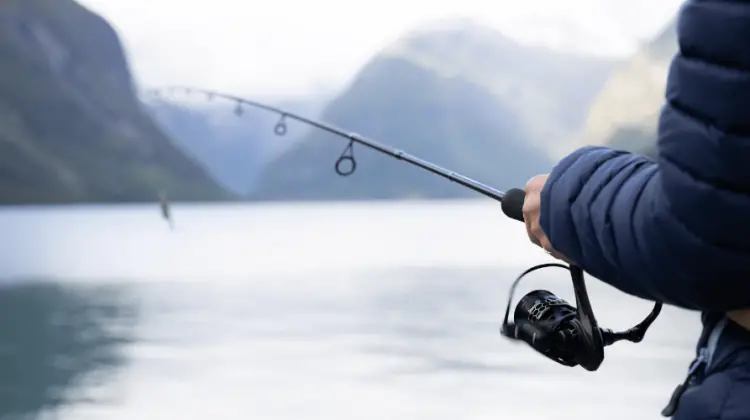
Popper lures are essential for anglers with various options in their tackle box. These small but strong lures mimic the movements and sounds of prey on the water’s surface, making them great for catching fish like bass, crappie, bluegill, and catfish. The unique shape of popper lures allows them to make a splashing noise as they move across the water, getting the attention of nearby fish. This surface disturbance imitates an injured baitfish, making hungry gamefish instinctively want to catch it. Whether you’re fishing in calm or rough waters, popper lures are good at attracting fish because of their ability to make noise and look tempting.
Anglers can retrieve popper lures in various ways, such as pulling them slowly, jerking them quickly and pausing, or making them move like prey fleeing predators. Experimenting with these methods can help determine what works best in different situations and with different fish. Poppers resemble distressed baitfish on the water, making them an enjoyable way for anglers to catch predatory fish. This article will discuss popper lures, their history and evolution, different types and designs, and how they effectively work.
What are Popper Lures?
Popper lures look like injured baitfish and make a lot of noise in the water, which attracts big fish. Popper lures are special because they make fish attack aggressively from the surface. They’re great for fishing because you can control how they move. When you make them splash on the water, they look like fleeing baitfish or bugs, which makes hungry fish want to catch them. People who fish with popper lures think it’s exciting because they see big fish jumping out of the water to catch the lure.
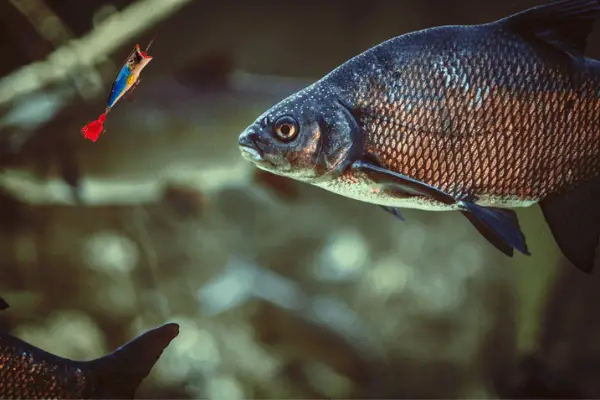
History and Evolution of Popper Lures
In the early 1900s, anglers began creating new designs to attract predatory fish, which led to the development of popper lures. These lures make a popping noise on the water to mimic the sounds of injured baitfish. As materials and manufacturing methods have improved, popper lures have become more realistic and durable, making them more effective at triggering aggressive strikes from game fish.
These fishing tools have greatly changed with new lifelike designs resembling real baitfish. These realistic lures trick even smart predators. They now also have things like rattles and holographic parts to attract fish. As anglers keep improving lure design, it’s interesting to see how popper lures will improve.
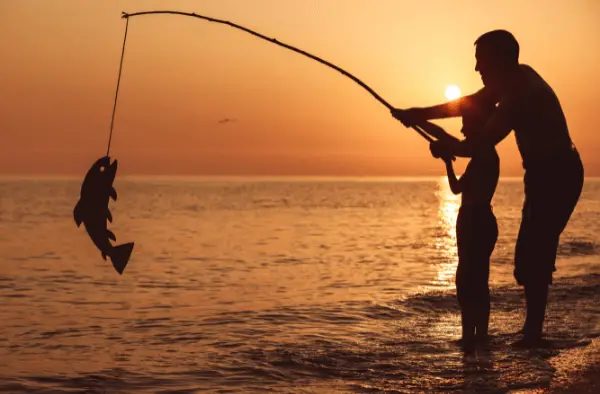
Types and Designs
Popper lures come in various styles and designs, each tailored for different fishing situations and types of fish. The classic cup-faced poppers produce a splash on the water’s surface, mimicking the motion of injured prey to entice aggressive predators like bass, pike, and tuna. In contrast, pencil poppers are lengthy and slim lures built for casting over long distances with a side-to-side walk-the-dog movement, making them perfect for pursuing stripers, bluefish, and tarpon in open waters.
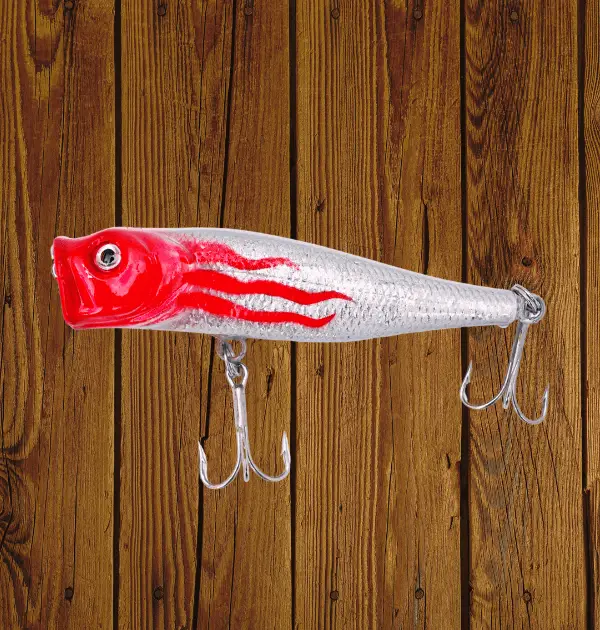
Moreover, poppers come in various designs that add diversity to the fishing experience. For example, chugger poppers have concave faces that make a distinct popping sound when pulled, which is great for catching game fish in calm waters or low light.
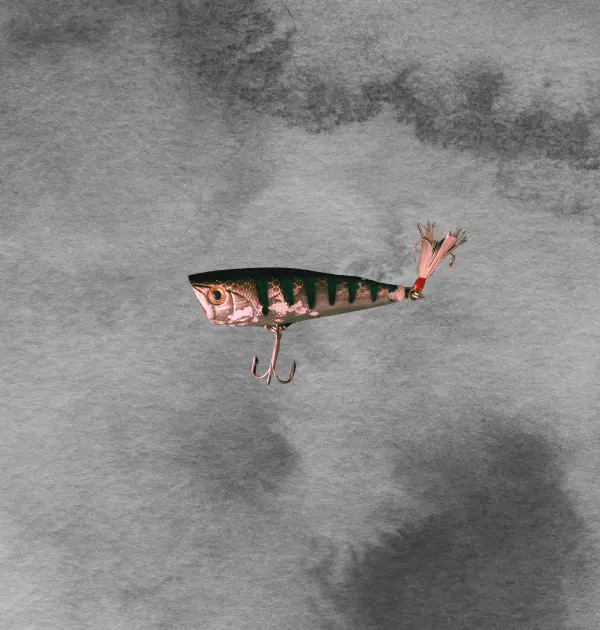
Additionally, hybrid poppers combine cupped faces with slender bodies or rattling chambers to create an enticing mix of sound and action. Knowing about these different types of poppers helps anglers be prepared for various fishing situations and increases their chances of catching the fish they’re after.
Selecting the Right Gear for Poppers
Achieving success with popper lures hinges largely on the equipment you select. First, opt for a lightweight fishing rod measuring 6 to 7 feet to manipulate the lure easily. Coupled with this, a top-notch reel featuring smooth drag capabilities will provide enhanced control over your catch. It’s also essential to use monofilament or braided fishing lines ranging from 6 to 10-pound tests to maintain the proper balance of strength and sensitivity.
Moreover, when you pick a fishing rod, look for one with a sensitive tip to feel gentle fish bites and enough strength to handle big fish. The reel should be strong and have a smooth drag system to stop the line from breaking during tough fights. For the fishing line, monofilament stretches more, which can help absorb sudden fish movements. Braided lines are more sensitive, making feeling even small fish bites easier.
In addition, by considering these equipment details and how they match popper fishing needs, you can improve your chances of success with these fishing tools.
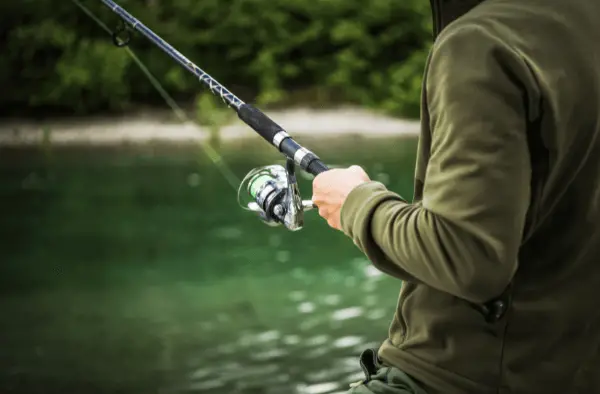
How to Fish with Popper Lures
Fishing with popper lures is an exciting skill that requires practice and instinct. These lures are designed to look like injured baitfish, which attracts predatory fish. You must learn how to make realistic splashes and pops on the water to get the best results with popper lures. By changing how fast you reel in and moving your fishing rod subtly, you can mimic the movements of distressed prey and attract even cautious fish.
Furthermore, when picking a popper lure, consider the color, size, and weight based on the fishing conditions. Bright colors work well in murky water or low light, while natural colors are better in clear water. Adjusting the weight of the popper can help you cast it farther and control its movement when you reel it in.
By experimenting with different sizes and designs in various fishing scenarios, anglers can refine their approach to match the preferences of different fish species. Mastering the fishing technique with popper lures offers many opportunities for anglers seeking to enhance their freshwater or saltwater fishing experiences.
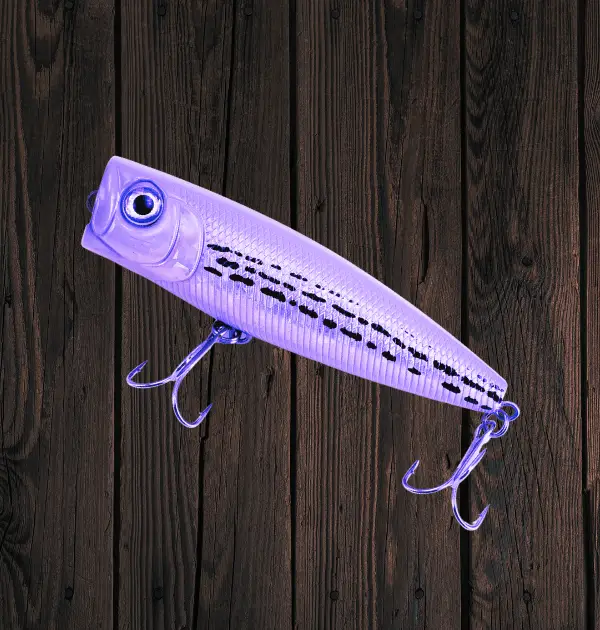
Tips for Using Popper Lures Effectively
Maximizing popper lures can greatly enhance your likelihood of a fruitful fishing expedition. The essential element in successful popper lures fishing is perfecting the art of generating alluring pops and splashes on the water’s surface. When employing a popper lure, you must vary your retrieval pace and pattern to replicate wounded baitfish movements, enticing predatory fish to take the bait.
Furthermore, it is advisable to experiment with diverse hues and dimensions of popper lures to correspond with the indigenous baitfish and capture more attention from ravenous fish.
Additionally, staying aware of your environment is important to make the most of using popper lures. Keep an eye out for signs of baitfish or predatory fish near the water’s surface, as this can help you figure out where to cast your popper lure.
Also, don’t hesitate to experiment with different techniques like walking the dog or popping and stopping to keep your presentation engaging and attractive. Staying alert and flexible while using popper lures can increase your chances of landing thrilling catches on your next fishing trip.
Pros and Cons
Pros
- Poppers effectively mimic the behavior of injured or struggling prey, making them a highly effective lure for attracting predatory fish.
- The splashes and popping sounds created by poppers can draw aggressive topwater strikes from various predatory fish species.
- Poppers are versatile and can be used in various water conditions, from calm to choppy surfaces.
- They provide an exciting visual and auditory experience for anglers when fish strike, adding to the excitement of fishing.
- Poppers are relatively easy and especially effective for novice anglers learning topwater fishing techniques.
Cons
- Poppers may be less effective in heavily weeded or densely vegetated areas where their action could be impeded.
- In some situations, particularly with finicky or wary fish, the loud popping action of poppers can deter strikes rather than attract them.
- Using poppers requires proper technique and timing to generate the desired action, which may have a learning curve for beginners.
- Poppers work best during specific times of day when predatory fish are actively feeding on the water’s surface, limiting their effectiveness during other periods.
- The aggressive strikes attracted by poppers can sometimes result in missed hooksets if anglers aren’t prepared for the sudden and forceful strikes from predatory fish.
Conclusion
Poppers are a great tool for fishing because they mimic the movements and sounds of distressed prey, which can provoke aggressive strikes from predatory fish. When they create splashes and popping sounds on the water’s surface, nearby fish take notice and instinctively start hunting. This makes poppers a useful addition to any angler’s collection, especially when catching species that feed near the water’s surface. By causing exciting strikes from above the water, poppers can add great fun and success to your fishing trips. So, next time you go fishing, consider bringing some poppers to attract explosive strikes from hungry predators.
FAQs
Q. What is a popper lure?
A. A popper lure is a fishing bait designed to mimic injured baitfish and create surface commotions to attract predatory fish.
Q. How do popper lures work?
A. Poppers create splashes and popping sounds on the water’s surface, mimicking the behavior of injured or struggling prey, which attracts aggressive topwater strikes from predatory fish.
Q. What types of fish can be caught using popper lures?
A. Poppers are effective for catching various freshwater and saltwater species, including bass, pike, muskie, trout, redfish, snook, tarpon, and more.
Q. What gear is best for using popper lures?
A. For optimal performance, anglers should use medium to heavy action rods with strong braided lines and leader material to withstand the aggressive strikes that poppers often provoke.
Q. When is the best time to use popper lures?
A. Poppers are most effective during low light conditions, such as dawn and dusk, when predatory fish feed near the water’s surface.
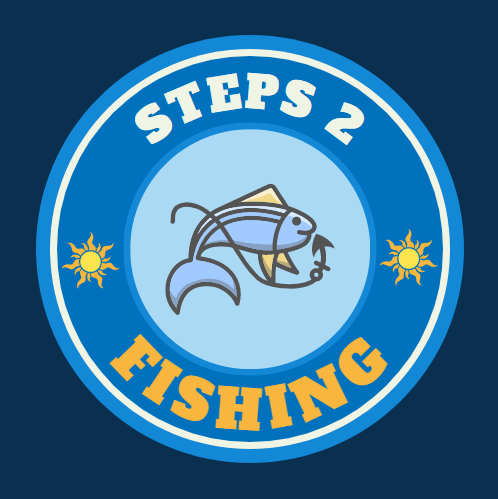

Leave a Reply